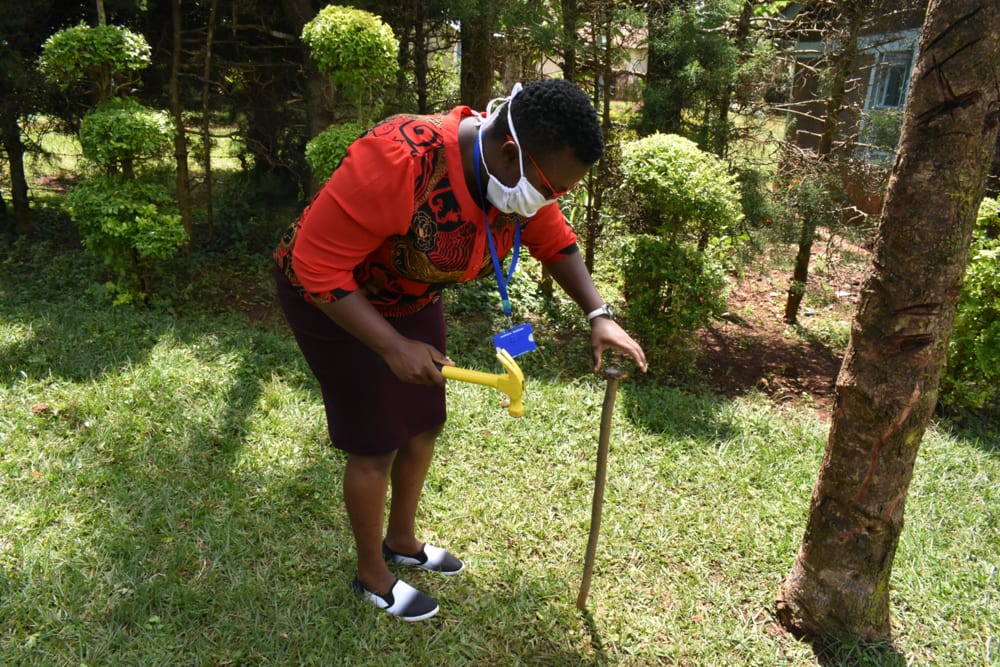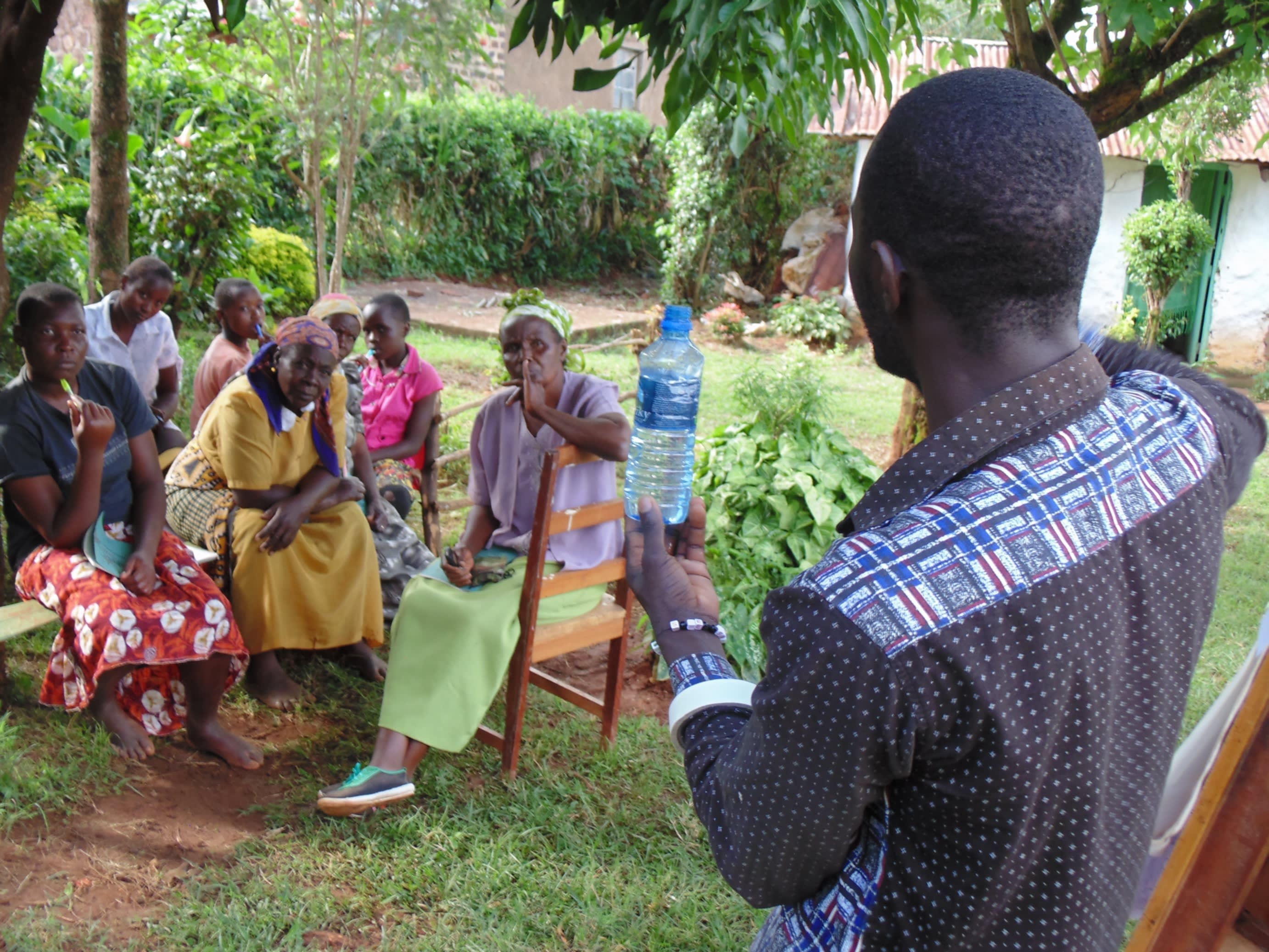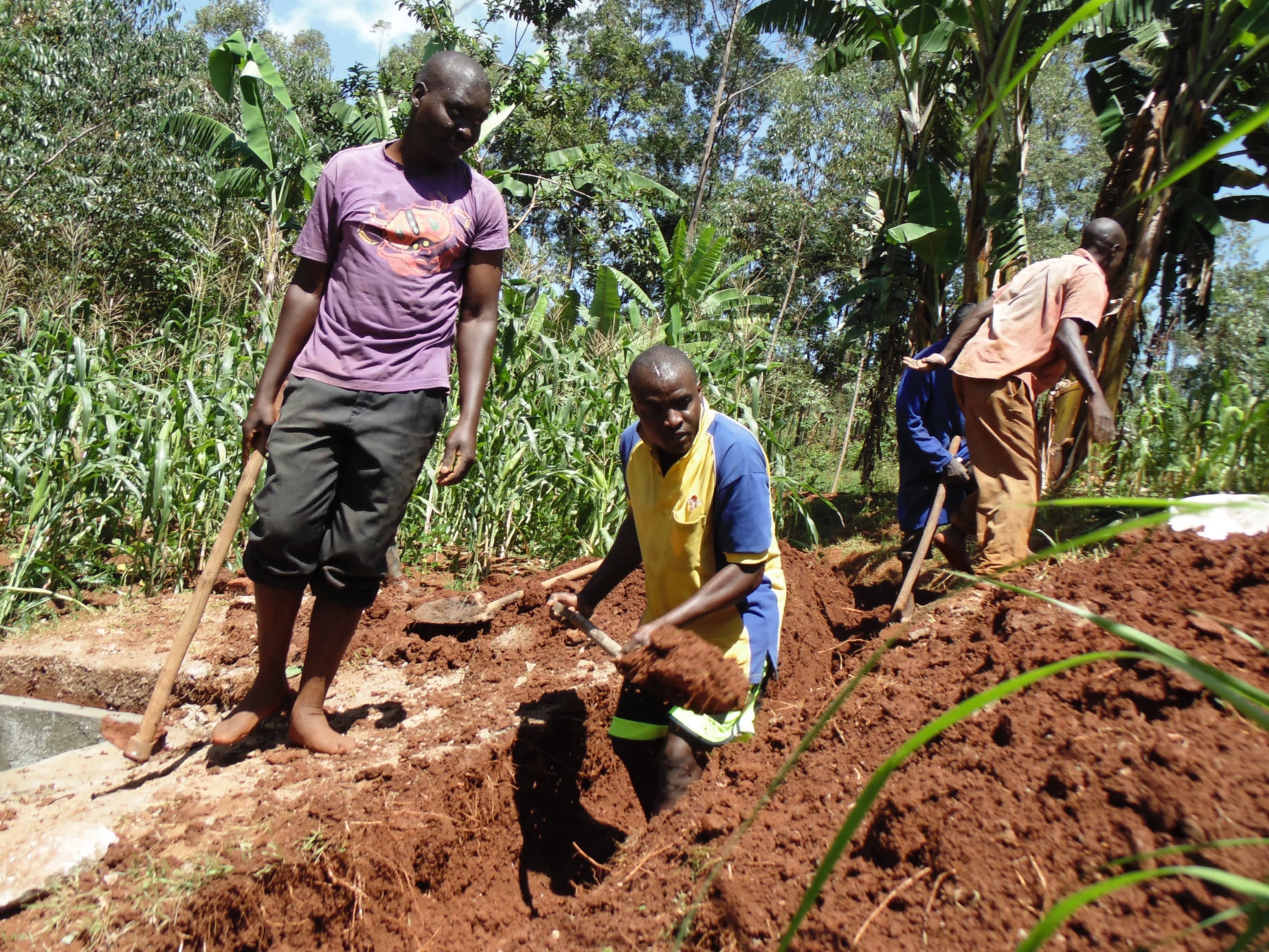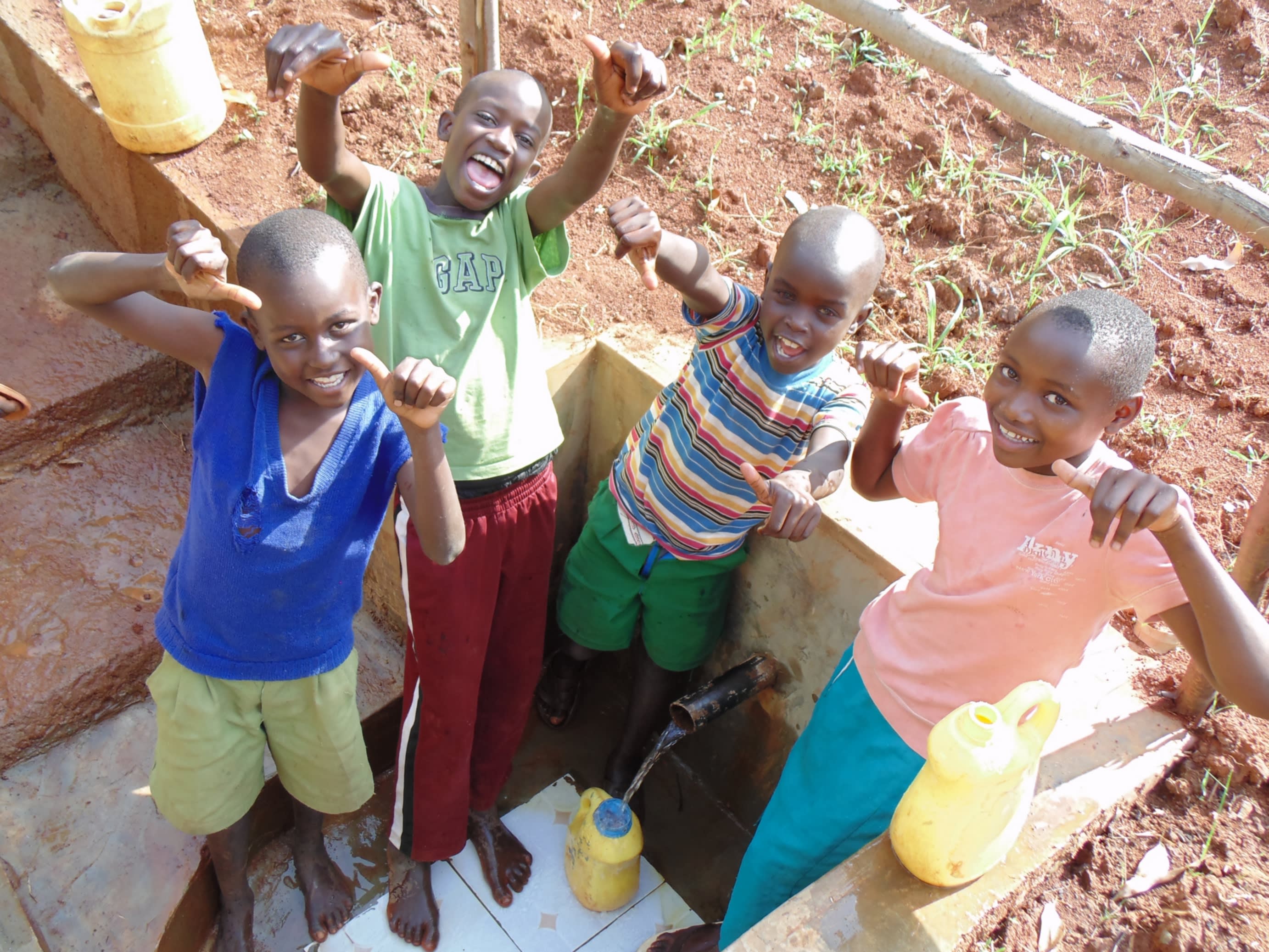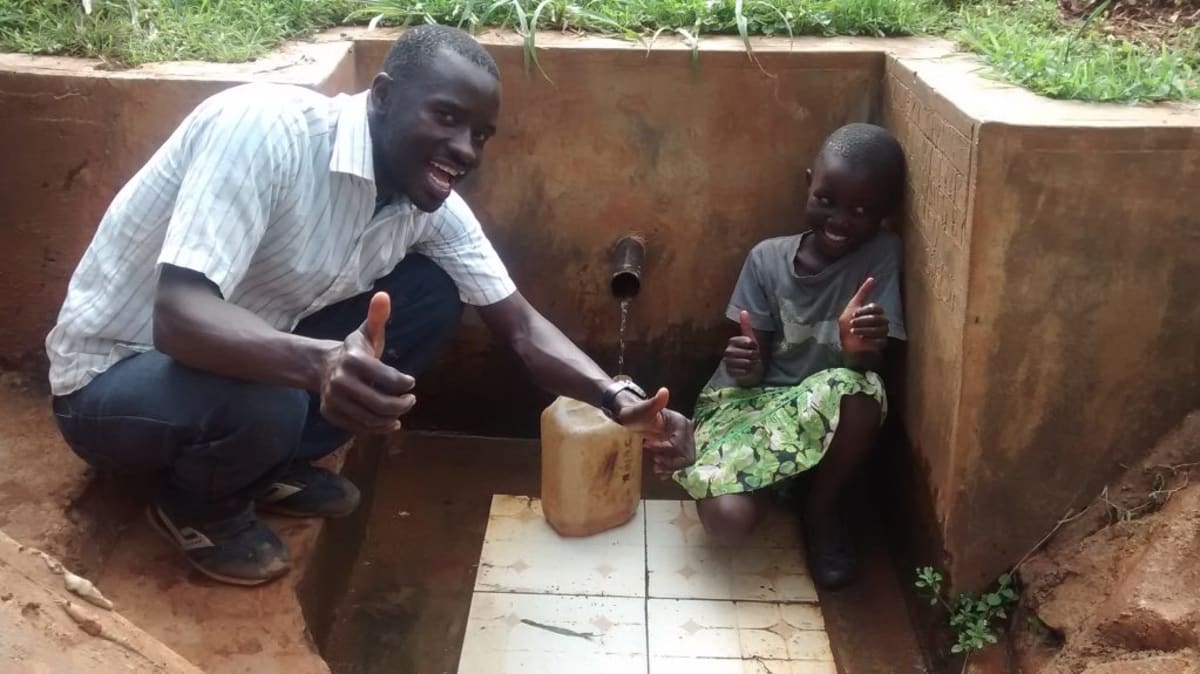This project is a part of our shared program with Western Water and Sanitation Forum (WEWASAFO). Our team is pleased to directly share the below report (edited for clarity, as needed).
Welcome to the Community
This is a region inhabited by the Maragoli sub-tribe of the giant Luhya Community. By 6 AM, everyone in Nyira Village - except the very little children - is always involved in the village hustle and bustle to ensure constructive work is accomplished. The men here tirelessly help their wives fend for their families, contrasting most men in Western Kenya who leave all family responsibilities to their wives.
Women engage in small-scale businesses in Mahanga, but they don't do as well as they'd hope. Customers travel as far as Majengo Town just to save five shillings. "People are so funny," exclaimed the spring's landowner Mr. Ondiek. "Imagine women and men trekking for eight kilometers from here to Majengo Town to buy goods, that they leave here in our small market, just because of a small difference in price of five shillings. That is a waste of time that should be used productively elsewhere!" Traders don't make good profits, but they keep on trying to sell day in and day out.
Children must arrive at school by 7 AM for class, and then return home for an hour at noon to eat lunch with their families. Children get home from school again at 5 PM and help their mothers accomplish domestic chores before they sit down to do revision and private studies by the light of their tin lamps fueled with kerosene.
There are so many children here, and many of them go hungry while their parents are out struggling to make ends meet. No wonder some children were seen eating wet maize stalks. When asked, nursery school students Elvis said, "We do not cook lunch at our home and I think this stalk to be sugarcane... at least it cools pangs of hunger until 6 PM when we eat supper." Anita added, 'We eat maize stalks whose sweetness is close to that of sugarcane. When all maize is gone, God is great; the guavas are usually ready, therefore we swiftly change from eating maize stems to eating guavas from the nearby bush and life moves on."
Water Situation
Just above the swampy thickets of Mahanga flows a water spring that has been used by the people of Nyira Village for decades. Ondiek Spring serves 30 households totaling 210 individuals, but that number increases as others use Ondiek Spring during the dry months. "You see few people here today because it has rained for two consecutive days, otherwise the queues you would have found here would not have allowed you do excavation to establish the sources and amount of water at this source," Adelaide Apiyo shared. But even the heavy rains that could have relieved many people from fetching water at the spring is not a relief to them because of their lack of storage facilities.
Ondiek Spring is open to all forms of contamination. Specifically, animals that come to drink here often urinate and step in the pool of water. Thus, it is unsafe for human consumption: urgent intervention is needed to rescue this community. "We have suffered diarrheal diseases because of using this water in such a poor state," said Mr. Oliver Ondiek, whom the spring is named after.
Sanitation Situation
Latrine floors are made of wood, leaving large holes and gaps that are dangerous for the young and elderly. They do not have proper doors, so a user must struggle to hold the broken doors closed as they squat. Most bathing shelters are made of banana leaves or dry maize stalks with old blankets for doors. The wind blows away the blanket when someone is bathing, so privacy is never guaranteed. There are no hand-washing stations here.
A few compounds have dish racks and clotheslines, but clothes were seen spread on bushes while other people dry their garments on iron sheets that conduct heat and dry them faster.
Plans: Hygiene and Sanitation Training
Community members will attend hygiene and sanitation training for at least two days. This training will ensure participants are no longer ignorant about healthy practices and their importance. The facilitator plans to use PHAST (Participatory Hygiene and Sanitation Transformation), CLTS (Community-Led Total Sanitation), ABCD (Asset-Based Community Development), group discussions, handouts, and demonstrations at the spring.
Training will also result in the formation of a committee that will oversee operations and maintenance at the spring. They will enforce proper behavior around the spring and delegate tasks that will help preserve the site, such as building a fence and digging proper drainage.
Plans: Sanitation Platforms
On the final day of training, participants will select five families that should benefit from new latrines.
Training will also inform the community and selected families on what they need to contribute to make this project a success. They must mobilize locally available materials, such as bricks, clean sand, hardcore, and ballast. The five families must prepare by sinking a pit for the sanitation platforms to be placed over. All community members must work together to make sure that accommodations and food are always provided for the work teams.
Plans: Spring Protection
Fetching water is predominantly a female role, done by both women and young girls. Protecting the spring and offering training and support will therefore help empower the female members of the community by giving them more time and efforts to engage and invest in income-generating activities.
In addition, protecting the spring will ensure that the water is safe, adequate and secure. Construction will keep surface runoff and other contaminants out of the water. Shitoto Community is ready and willing to do everything they can to make this project a success.
Increasing accessibility to water and sanitation facilities as well as equipping people with adequate knowledge on sanitation and hygiene will prevent and control diseases. Time and finances wasted in search of treatment will be saved, instead used to develop the village.

 Protected Spring
Protected Spring
 Rehabilitation Project
Rehabilitation Project












